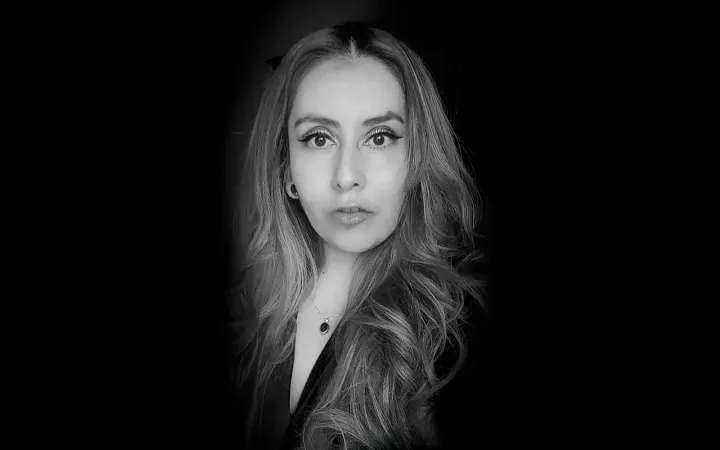
Por Valeria Villa

Uno de los temas que más me han interesado en mi vida profesional son las distintas manifestaciones de lo que conocemos como depresión. Personalmente encuentro útiles dos abordajes para entenderla: el psiquiátrico y el psicoanalítico. Pienso que no es posible trabajar solo con uno de ellos y que lo mejor para quienes sufren es tener alternativas para curarse desde la perspectiva médica y desde la comprensión analítica que se puede alcanzar en terapia.
Este trastorno del estado de ánimo se manifiesta con tristeza pero también con rabia (que suele estar encubierta) y es provocado por causas que a veces son identificables y en ocasiones difíciles de ubicar. Es así que hay dos caminos para tratarla: los fármacos y descubrir las causas inconscientes.
La enfermedad depresiva puede durar entre 4 a 6 meses y en algunos casos cede espontáneamente. Se decide tratarla porque hay que evitar el sufrimiento inútil, para evitar recaídas y para atajar, si existiera, la intención suicida y la melancolía, que hemos mal entendido como algo ligero y hasta romántico, cuando en realidad se trata de un duelo patológico de corte psicótico, es decir, de indiferencia absoluta por el yo y por el mundo exterior.
Desde la perspectiva médica, la depresión se define como un conjunto de signos clínicos característicos que hay que saber identificar: cansancio crónico (que hoy está de moda describir como burn out), dormir demasiado, lentitud en las actividades cotidianas, falta de concentración, incapacidad para planear el futuro, ideas suicidas fugaces o repetitivas, cambios en el apetito (anorexia o bulimia), sueño alterado con dificultad para conciliarlo, para mantenerse dormido o incapacidad para dormir más de 3 o 4 horas. La tendencia es a encerrarse en sí mismo y autocriticarse.
En cuanto a la comprensión analítica, el afecto dominante es una tristeza fuera de lo normal, o sea muy intensa, insidiosa, descrita como una neblina que ensombrece, mezclada con ansiedad, ánimo atormentado, amargura, irritabilidad, con tendencia fácil al enojo y a la queja. Susceptibilidad, cólera, reclamos a las personas cercanas, rencor por lastimaduras del pasado. Hay en la tristeza del depresivo un odio antiguo y rabia vuelta hacia sí mismo. Es un estado permanente que no solo reduce sino que inhibe toda acción.
Hay un repliegue obsesivo en sí mismo, autodevaluación y rumiación de las desgracias, de los errores imperdonables, necesidad masoquista de gozar (no disfrutar) de la culpa, llamada por Freud masoquismo moral, debido a todas las fallas, imperfecciones y errores personales. La culpabilidad del deprimido es monstruosa.
Se pierde el deseo, no hay gusto por nada, ni por el amor, ni por el sexo y no quiere ver a nadie. Aburrimiento, pocas ganas de vivir, la voluntad y la pulsión de vida adormecidas.
Para el psicoanálisis la depresión es el síntoma de la descomposición de una neurosis. Esto quiere decir que prevalece un ánimo de despecho, desengaño, desencanto y la convicción de que nada vale la pena incluida la terapia. La neurosis es la causa de la depresión.
¿Qué es exactamente un estado neurótico? La fragilidad de una persona vulnerable a las separaciones o a las pérdidas. El neurótico enfrenta las desgracias como inadmisibles, injustas, como amputaciones de partes vitales de sí mismo. Vive las pérdidas como impensables: de los objetos de amor, de un sentimiento destruido por una traición, de la salud, de la juventud, de las posesiones materiales, del trabajo, de los ideales de juventud.
La depresión entonces tiene que ver con la vulnerabilidad del sujeto a la pérdida, con intensos sentimientos de frustración, que se define como la falta en lo imaginario de un objeto real. Es el objeto esperado, pedido, soñado, que el neurótico tiene la certeza de obtener, o el otro se lo tiene que dar, porque se lo merece, se lo debe. Cuando no obtiene lo que fantasea aparece el desengaño, desaparece la promesa, la ilusión y su lugar lo ocupa la rabia.
No es la pérdida lo que causa la depresión sino el modo de vivirla, porque se puede aprender a vivir con la herida, porque se puede conservar la capacidad de amar y porque es posible seguir amándose uno mismo, pero si existe una dependencia patológica con el objeto amado ocurre el derrumbe del ser y la depresión subsecuente.
El depresivo sostiene dependencias patológicas con su mundo de afectos. Experimenta un narcisismo exacerbado, un amor de sí idealizado, que necesita de la fusión con un ser amado que alimente una ilusión infantil, del niño que no quiere que nadie toque sus sueños de ser para siempre el más querido, el más admirado, el más reconocido. El depresivo no ama al otro por lo que es sino porque es fuente vital de su sí mismo idealizado. El objeto más precioso no es la persona amada ni el amor sino su yo híper ideal.
Para curarse de la depresión hay que ocuparse de la ilusión infantil de omnipotencia. Aceptar que no se puede todo ni se puede todo perfectamente. No ocuparse de la tristeza sino de ubicar cuál es la ilusión perdida. También trabajar con la rabia reprimida, que ha quedado atrapada en el yo. Hay que trabajar en la distinción entre lo posible y lo imposible y ubicar para corregir el carácter obsesivo y compulsivo de los pensamientos negativos.
La depresión no es un invento de la burguesía y sí una enfermedad de la vida emocional que necesita tratamiento, a veces dual, con antidepresivos y terapia, y otras veces exclusivamente terapéutico. Nadie debería esperar a ponerse grave, lo mejor es hablarlo con nuestra red de apoyo y buscar ayuda profesional cuanto antes.
Las opiniones expresadas son responsabilidad de sus autoras y son absolutamente independientes a la postura y línea editorial de Opinión 51.
Más de 150 opiniones a través de 100 columnistas te esperan por menos de un libro al mes.






Comments ()